It might have been one of the worst air disasters in Canadian history, but, it wasn’t.
On this day, July 23 1983, an almost brand new, at the time high-tech passenger jet, was scheduled to take off on a routine flight from Montreal to Edmonton via Ottawa.
The Boeing 767 was state of the art at the time but when mechanics checked out the plane, they found bad soldering and a problem with the FQIS –fuel quantity indicator system…in other words the fuel gauges were not working. As with any brand new technology, this was just another small glitch with the new 767s.
The pilots, Bob Pearson and copilot Maurice Quintal, instructed the fuelers to fill the tanks manually as the spare part would not arrive till the next day.
The calculations made, they checked and rechecked the fuel figures and the plane took off on time. Landing safely at the stop in Ottawa, no-one thought there was a problem. but to be certain, the fuel load figures were checked again.
It was only later high over the Canadian shield (41,000 ft/ 12,000m) at Red Lake, Ontario, and towards the prairies that a warning light flashed in the cockpit indicating low fuel pressure.
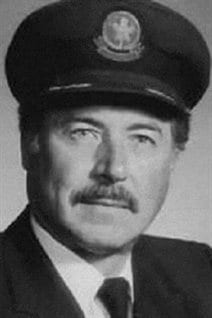
Not overly concerned at first, Pearson and Quintal began checking the manual for procedures. There were two fuel pumps, anyway so if one failed there was a backup. But then the second pump light began flashing, and the pilots radioed for an emergency landing at Winnipeg, Manitoba still thinking it was a glitch in the new plane’s internals.
As they changed to a new heading and began a slow decent through cloud toward Winnipeg, more lights began flashing. Then the port engine went silent. it had simply cut out.
Even though pilots are trained on how to land with one engine, the situation had became very serious
As they continued the decent, suddenly there was a shudder as the starboard engine stopped producing power and an eerie silence as that engine also died.
Because the engines provide electric and hydraulic power, the cockpit and instruments also quit working and without that power the pilots had no control over ailerons and rudder.
No procedures for dead-stick landing.
A few moments later, emergency battery supply came on and a small trap beneath the plane opened to a ram air turbine, spun only by air pressure due to the plane’s speed. This began to give limited hydraulic power to the control surfaces.
The pilots consulted the manual for emergency procedures for landing with both engines out. There were none. The Boeing engineers had not imagined a scenario of both engines out.
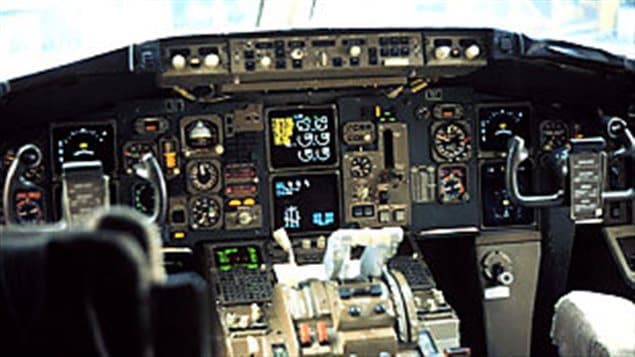
Pearson was an experienced glider pilot and managed to keep the plane under control as it quickly descended through the cloud, both pilots now realizing they could not reach Winnipeg. Things were grim indeed.
Quintal then remembered an air force base at a little town called Gimli only a few miles from their position. He had once served there, and asked for headings as they were still without most instruments, other than analog airspeed, artificial horizon, altimeter, and magnetic compass.
Winnipeg control could provide the pilots no information on Gimli and what no one knew was the base had been closed, and only one runway was had remained available, and that was for local small planes. The other runways on the former base had been turned into an improvised dragstrip and small race track for cars and go-karts. In fact that day there was a crowd on the airstrip watching go-kart races.
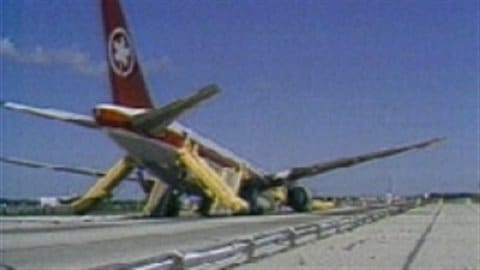
Coming through the clouds they could see the airstrip in the distance, but Pearson knew they were too high, and yet too low for a turn around, He began a side-slip which loses altitude while maintaining heading, It’s not uncommon in small private planes, but is a highly unusual move for a huge jetliner.
Now as he levelled out for the approach the ram turbine had also slowed due to the side-slip and reduced wind pressure on the turbine. This made the already very tenuous control over flight surfaces (rudder, ailerons) even more difficult as Pearson tried to straighten the huge jet out and line up for final approach on the runway.
A few in the crowd were stunned to see this giant aircraft silently but rapidly approaching
As they touched down hard the pilots jammed on the brakes, as there were neither flaps nor reverse thrust to slow them.
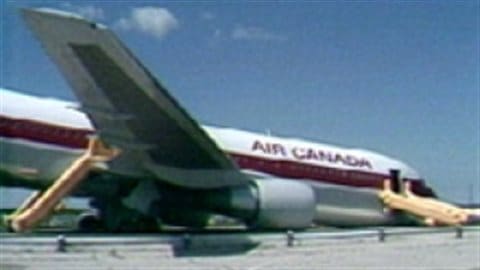
Tires burst and the front gear collapsed as the nose crashed down on the cement. This would prove to be a good thing as the friction against the ground and the nose also rubbing against an Armco barrier, managed to slow them to a stop almost 3,000 feet along the runway and just short of the crowd, many of whom were caught, shocked and unmoving, like deer in the headlights in the face of this astounding danger.
The plane finally stopped and emergency ramps deployed. The 61 passengers slid down with no serious injury.
They were thankful for the skil of the pilots, who like everyone, were relieved to have survived what should have been an impossible and deadly situation.
The plane was given emergency repairs and flown to Winnipeg a few days later for more extensive repair before returning to service.
Of course, a board of inquiry was held and found a number of errors. The most glaring of which was a crucial misunderstanding of metric measure.
Canada had switched to the metric system only a few years earlier, and most planes in the fleet were still operating on Imperial measurement systems, while the brand new 767’s delivered to Canada were the first converted to metric.
As it turned out, the investigation revealed that the fuelers had measured the fuel in pounds instead of kilograms, meaning the plane had been loaded with about half the fuel needed for the flight. Pearson and Quintal also used the wrong formula to check the fuel weight and signed off on the log. A further check in Ottawa, repeated the same error.
Simulation results in crashes.
The two pilots were initially demoted as a result of the incident, but later when several other pilots tried to recreate the situation in simulators, they all crashed. Besides, Canadians across the country, and aviators everywhere hailed them as heroes. In 1985 they received the well-deserved Fédération Internationale Aéronautique (FIA) Diploma for Outstanding Airmanship for having saved the lives of all passengers and crew in an amazing display of flying skill.
Once repaired, the plane registered as C-GAUN, continued operations until January 1, 2008. A few weeks later it was flown to the Mojave Desert, the “boneyard” for airplanes.
In April 2013, the aircraft was offered for sale at auction by Collector Car Productions. They hoped to get $2.5 million, but the highest bid was a mere $425,000, well below the reserve price and so was left sitting unsold.
The plane was reported dismantled in 2014, presumably for parts. but not totally scrapped. Some of the metal however was made into metal luggage tags, being sold online.
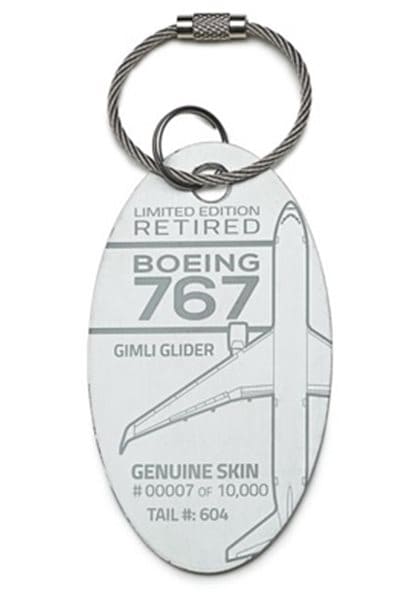
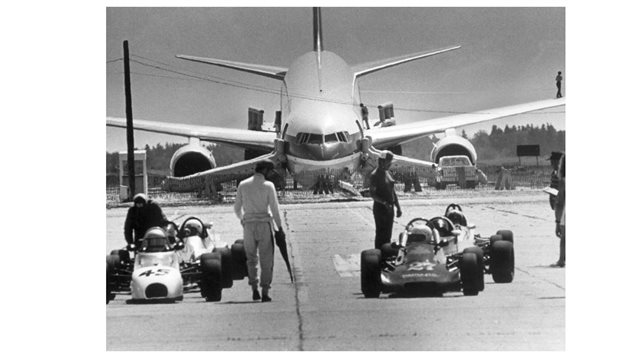






For reasons beyond our control, and for an undetermined period of time, our comment section is now closed. However, our social networks remain open to your contributions.